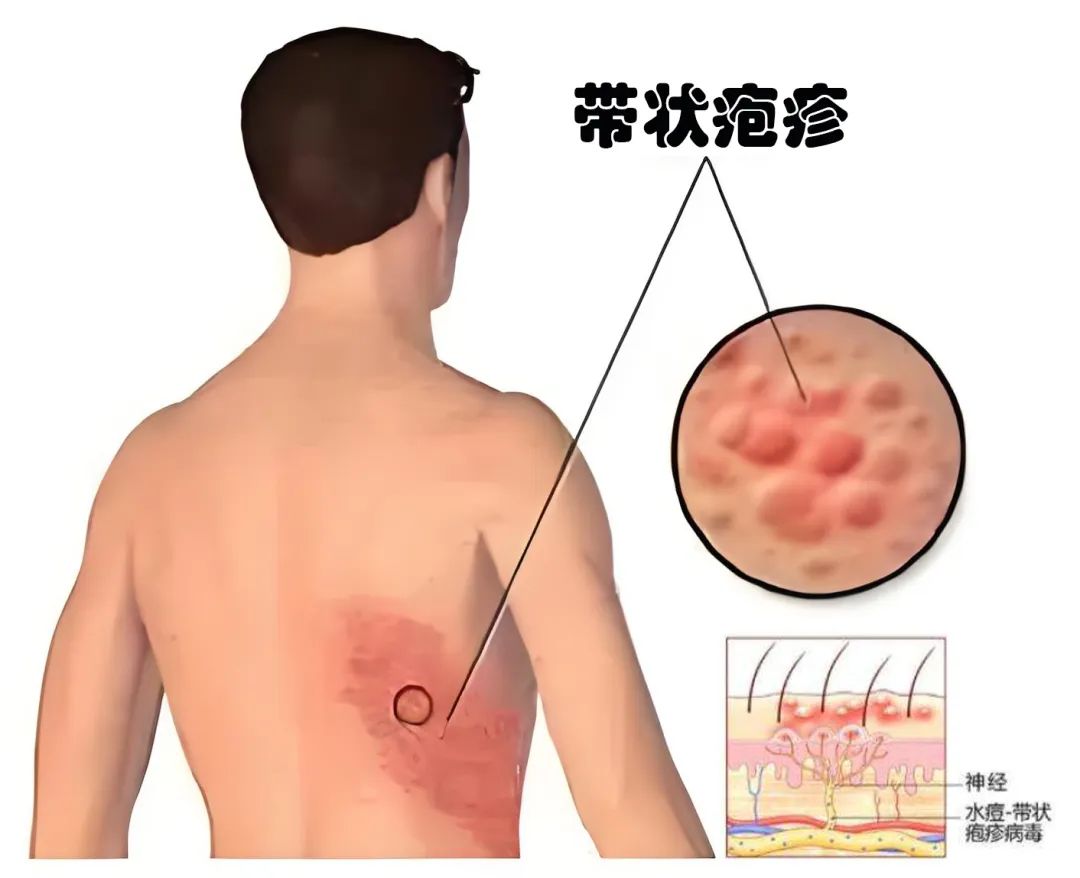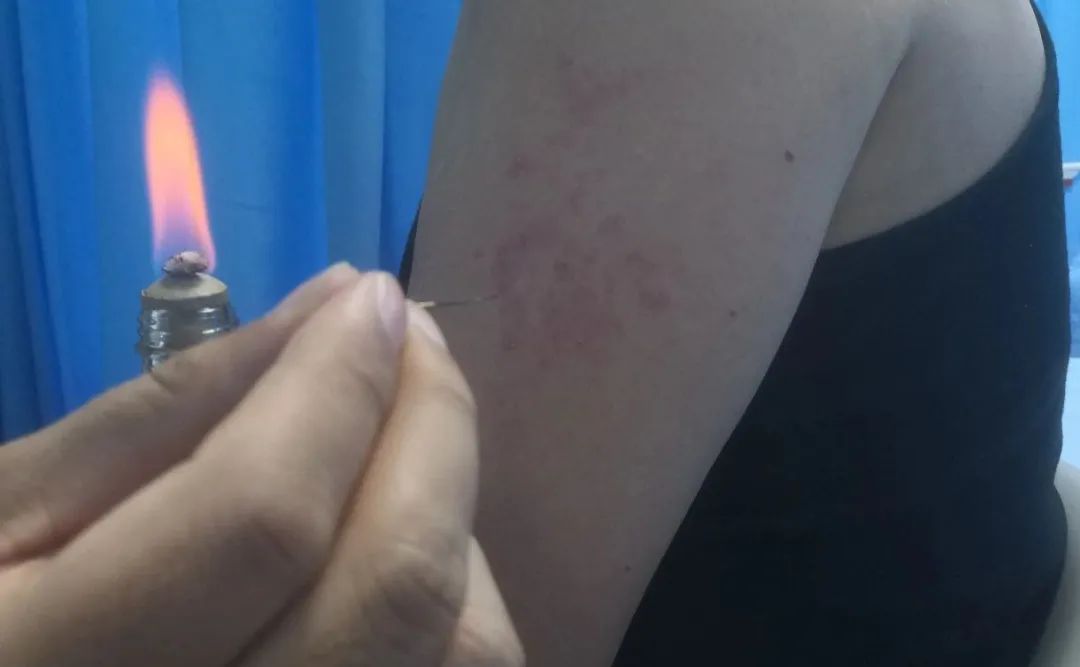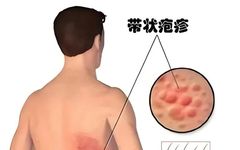Herpes zoster (带状疱疹, zheng zhi) is an acute inflammatory skin disease primarily characterized by severe neuropathic pain, caused by the varicella-zoster virus (水痘—带状疱疹病毒, shui dao – dai zhuang piao zhen bing du). Clinically, it manifests as skin blisters and intense pain, commonly affecting the facial area, chest, back, and abdomen. Clinical reports indicate that 15% of the population has experienced herpes zoster, with more severe cases and higher incidence rates among individuals with weakened immune function and the elderly. Due to various factors, the incidence of herpes zoster has been on the rise in recent years. After treatment, 10-15% of patients still experience severe postherpetic neuralgia, with an incidence rate of 50-85% for those who suffer from persistent pain lasting more than one month after the clinical resolution of herpes zoster. The onset of herpes zoster is related to a decrease in the body’s immune function, particularly associated with a decline in cellular immunity.

Herpes Zoster
“Fire Needle” Pain Relief

In traditional Chinese medicine, herpes zoster is referred to as “She Dan” (蛇丹), “Spider Sores” (蜘蛛疮), and “Snake Chain Sores” (蛇串疮). It often occurs in the lumbar and abdominal regions, hence it is also called “Chuan Yao Huo Dan” (缠腰火丹). This acute herpes skin disease is characterized by clusters of blisters appearing unilaterally on the body, with pain likened to being burned by fire. The earliest record of herpes zoster in the text “Zhu Bing Yuan Hou Lun” (诸病源候论) refers to it as “Zhan Dai Chuang” (颤带疮), stating: “Zhan Dai Chuang occurs around the waist, caused by wind and dampness affecting the blood and qi, resembling a belt, hence the name. It is said that if this sore encircles the waist, it can be fatal.”
Henan Provincial Chest Hospital
01
Etiology
Traditional Chinese medicine believes that the occurrence of this disease is primarily due to emotional distress, leading to liver qi stagnation, which transforms into fire over time. The accumulation of fire toxin in the liver meridian, combined with the invasion of wind evil, can ascend to the head and face; or damp evil can descend, affecting the genital area or lower limbs; or excessive fire toxin can manifest in the trunk; or spleen deficiency can lead to dampness transforming into heat, causing damp-heat to accumulate in the skin; or blood deficiency with excessive liver activity, fatigue, and infection by toxic pathogens, or excessive damp-heat leading to qi and blood stagnation.
01
Clinical Manifestations
The rash of herpes zoster typically occurs on one side of the body, primarily presenting as pain and vesicles distributed along the nerves, usually not crossing the midline. It can occur on the head, face, neck, chest, abdomen, and limbs. Early symptoms of herpes zoster may include fever, fatigue, and headache, with the affected skin area possibly experiencing burning sensations and pain.
03
Treatment
Western medicine primarily treats herpes zoster with antiviral medications, analgesics, corticosteroids, and immunomodulators. In contrast, traditional Chinese medicine focuses on fire needle therapy, including: simple fire needle treatment, fire needle combined with cupping, fire needle combined with moxibustion, as well as regular acupuncture, electroacupuncture, and bloodletting cupping.

Fire needle therapy in traditional Chinese medicine involves using a specially designed needle, heated until red, and then inserted into specific acupoints or affected areas of the body, achieving therapeutic effects.

Fire needle therapy has effects such as dispelling cold and dampness, resolving masses and nodules, benefiting the kidneys and strengthening yang, promoting lung function and alleviating asthma, relieving itching, and clearing heat and detoxifying. It is suitable not only for the treatment of cold and pain syndromes but also for heat syndromes, as the warmth of the fire needle helps expel heat toxins.
Precautions
1
When using fire needles, safety must be ensured to prevent burns or fire accidents.
2
Patients who are overly tense, hungry, fatigued, or intoxicated should not undergo fire needle treatment until their discomfort subsides.
3
Patients with weak constitutions should lie down during treatment.
4
Fire needles should not be used on certain body parts, such as major blood vessels, internal organs, and vital organs.
5
Use of fire needles on the face should be approached with caution. Ancient practitioners believed that fire needles should not be used on the face due to the potential for small scars. However, if fine fire needles are used for shallow insertion, it can treat diseases without leaving scars, thus the prohibition is not absolute.
6
After fire needle treatment, patients should be informed of the following three points: First, a normal reaction post-treatment may include redness at the needle site or small red dots raised above the skin, and some patients may experience itching. Patients should not worry, as this is a normal response to fire needle treatment. The needle site is a mild burn that will resolve on its own in a few days without special treatment. Second, if itching occurs at the needle site, patients should avoid scratching with their nails, as this may enlarge the red area and affect subsequent treatments. Third, it is best to avoid bathing on the day of treatment to protect the needle site from water exposure, which could lead to infection.
7
Post-treatment, patients should maintain cleanliness.
8
During fire needle treatment, avoid consuming cold or raw foods.
9
Diabetic patients should not use fire needles, as their needle sites may not heal properly.
Text and Images: Li LeiEditor: Yu YanshuReviewers: Zhang Shenghua, Yang Rui


